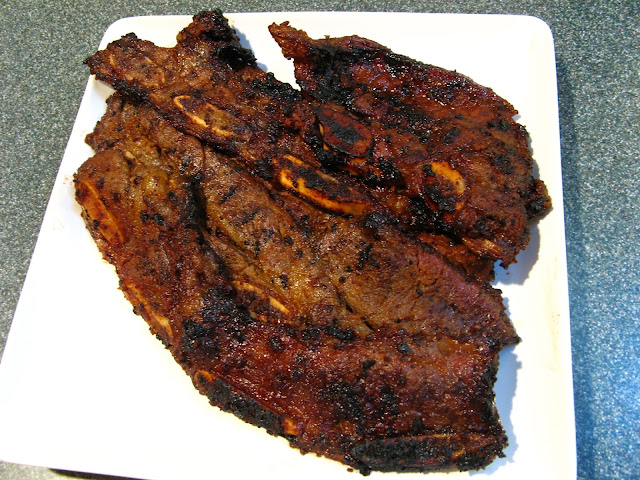Los Angeles style Korean barbeque beef short ribs, or L.A.
Galbi, uses flanken cut beef short ribs and has its origins in Los Angeles’
Koreatown. Flanken cut means the beef short ribs are cut across the bone into
thin strips. This cut of beef short ribs is readily available in the USA and
differs from the galbi found in Korea (although according to Wikipedia, this style has made
it back to Korea).
I made my own sauce for this recipe, as opposed to a store
bought version used in my previous recipe, Korean
Barbequed Beef Short Ribs (Kalbi). The secret to the marinate is using a
whole pear in the marinade (together with Korean Fermented Soybean Paste – Doenjang
- and Korean Hot Pepper Paste – Gochujang) which tenderizes the beef. The beef
is marinated for at least 48 hours (the longer the better!) before cooking.
Enjoy!






